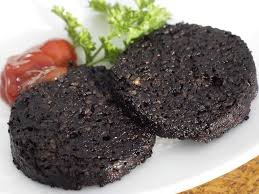Black Pudding Origins, Uses, and Cultural Significance

Black pudding is one of the oldest known forms of sausage, steeped in rich history, culinary tradition, and regional pride. While often a subject of curiosity or controversy among those unfamiliar with it, black pudding holds an esteemed place in many cultures—especially across the United Kingdom, Ireland, and parts of Europe. Despite its humble ingredients, black pudding represents a blend of heritage, sustainability, and gourmet innovation.
This article explores every facet of black pudding—its origins, traditional recipes, cultural associations, nutritional aspects, and modern adaptations. Whether you’re a food enthusiast, chef, or a curious reader, this guide will deepen your understanding of black pudding and its place in the culinary world.
Black Pudding and Its Ancient Origins
The story of black pudding stretches back thousands of years. As one of the oldest known types of sausage, black pudding originated as a way to use the entire animal after slaughter, including the blood, fat, and various grains.
Ancient texts from the Greeks and Romans reference blood-based sausages. In Homer’s Odyssey, there is mention of a sausage made with blood and fat. This historical reference is widely believed to be a form of early black pudding. Over time, different regions adapted the concept, incorporating locally available ingredients like oats, barley, onions, or herbs.
By the time of the medieval period in Europe, black pudding had become a staple part of peasant diets. It was practical, calorie-dense, and economical—perfect for feeding families through harsh winters. Its production typically coincided with pig slaughtering season, a communal and essential event in agrarian societies.
Black Pudding and Its Regional Varieties
Though the general definition of black pudding refers to a sausage made with animal blood (usually pig), fat, and cereal grains, its preparation varies widely by region.
- United Kingdom: The UK is perhaps most closely associated with black pudding, particularly in the North of England, Scotland, and Northern Ireland. The British variety often includes pork blood, suet, oats or barley, and sometimes onions. Bury, a town in Greater Manchester, is famous for its black pudding and even hosts a Black Pudding Throwing Championship.
- Ireland: Irish black pudding is quite similar to the British kind, but with minor differences in spice profiles and grain content. Irish breakfasts almost always feature a slice of black pudding, paired with white pudding and eggs.
- Spain: Known as morcilla, the Spanish version of black pudding often incorporates rice instead of oats and is heavily seasoned with paprika and garlic. Regional versions of morcilla can vary greatly—Asturian morcilla is soft and spreadable, while Burgos morcilla is firmer.
- France: In France, black pudding is called boudin noir, typically seasoned with onions, apples, or even wine. It’s often pan-fried and served with mashed potatoes or fruit sauces.
- Germany and Eastern Europe: Many German and Polish sausages such as blutwurst and kaszanka are variations of black pudding, often enriched with buckwheat or barley and enjoyed hot or cold.
Each of these regional adaptations reveals something about the local culture and agricultural practices—making black pudding a window into history and heritage.
Black Pudding in Modern Cuisine

Once considered an old-fashioned or even ‘peasant’ food, black pudding has enjoyed a culinary renaissance in recent years. Modern chefs around the world are embracing black pudding for its deep, savory flavor, unique texture, and historical significance.
Gourmet versions of black pudding now appear on high-end restaurant menus. Some chefs pair it with scallops, apples, or foie gras, creating a balance between sweetness, saltiness, and umami. Others reinvent it in tacos, burgers, or fusion dishes.
This culinary evolution hasn’t erased the traditional appeal of black pudding. It still holds a firm place in the full English or Irish breakfast, fried or grilled alongside bacon, sausages, tomatoes, and eggs. In fact, many consider a proper breakfast incomplete without black pudding.
Even in vegan and vegetarian circles, the influence of black pudding is visible. Plant-based versions made from beets, black beans, mushrooms, and spices mimic the original’s taste and appearance without using animal products.
Black Pudding and Nutrition: Superfood or Guilty Pleasure?
One of the reasons black pudding continues to generate conversation is its nutritional profile. At first glance, its use of pig’s blood and fat may sound off-putting or unhealthy. However, when consumed in moderation, black pudding can be surprisingly nutritious.
Black pudding is rich in:
- Iron: One of the most iron-dense foods available, making it beneficial for people with anemia.
- Protein: High in protein, especially the animal variety that contains all essential amino acids.
- Zinc and Magnesium: Important for immune function and muscle repair.
However, it also contains saturated fat and sodium, which can be concerning if consumed excessively. The healthiness of black pudding depends largely on how it’s made and how often it’s eaten.
Artisan producers now offer leaner or organic versions of black pudding, using free-range pork, less salt, and healthier grains like quinoa or brown rice. These updates reflect changing consumer preferences while keeping tradition alive.
Black Pudding and Its Cultural Importance
Beyond the kitchen, black pudding holds a strong symbolic and cultural role in many communities.
In Bury, England, black pudding is not just food—it’s part of the town’s identity. The World Black Pudding Throwing Championships is a quirky annual event where participants hurl black pudding at a stack of Yorkshire puddings, aiming to knock them down. The event draws thousands and celebrates the region’s culinary heritage with humor and pride.
In Ireland and Scotland, black pudding is deeply woven into rural traditions. Recipes are passed down through generations, and small butcheries specialize in handcrafted varieties. It often features in seasonal festivals and national holidays.
In literature and pop culture, black pudding has even taken on comic or iconic status. From British sitcoms to culinary documentaries, black pudding often plays the role of the “odd delicacy” that shocks or delights the uninitiated.
How to Make Traditional Black Pudding at Home

If you’re curious about trying black pudding in its most authentic form, making it at home is both educational and rewarding—though not for the faint-hearted.
Ingredients:
- Fresh pig’s blood (or dried blood powder reconstituted with water)
- Pork fat or suet
- Steel-cut oats or barley
- Onions, finely chopped
- Salt, pepper, and herbs (thyme, marjoram, etc.)
Steps:
- Mix the blood with oats, spices, and cooled, sautéed onions.
- Add chopped pork fat and mix thoroughly.
- Stuff the mixture into cleaned sausage casings.
- Simmer gently (don’t boil) for about 30 minutes until firm.
- Let cool and store. Slices can be fried, grilled, or baked before serving.
While making black pudding requires access to specialty ingredients, butcher shops or online suppliers can often help. Homemade black pudding has a depth of flavor that store-bought varieties often lack.
How to Enjoy Black Pudding in Meals
There are countless ways to cook and serve black pudding:
- Breakfasts: Slice and fry alongside eggs and toast.
- Salads: Crumbled black pudding over a salad with poached egg and mustard vinaigrette.
- Appetizers: Pair pan-seared scallops with a medallion of black pudding and apple purée.
- Burgers and Tacos: Use crispy black pudding as a gourmet topping.
- Stuffings: Mix into bread or potato stuffings for poultry and game.
The key is to contrast black pudding’s richness with sweet, acidic, or fresh ingredients. Apples, vinegar, citrus, and leafy greens all balance it beautifully.
Black Pudding in Global Gastronomy
Today, black pudding is no longer confined to Europe. Across Australia, Canada, and even parts of Asia, chefs and immigrants have brought black pudding to new audiences. Fusion dishes now incorporate it into ramen, dumplings, empanadas, and rice dishes.
The export of black pudding also contributes to economic growth in regions like Bury and Cork, where traditional recipes have become global delicacies.
Also read Josh Radnor Life, Career, and Artistic Evolution
Conclusion: The Enduring Appeal of Black Pudding
Despite being rooted in ancient tradition, black pudding remains more relevant than ever. It has evolved from a humble survival food into a celebrated delicacy, embraced by home cooks, gourmet chefs, and food adventurers alike.
With its rich nutritional profile, deep cultural roots, and increasing culinary versatility, black pudding is experiencing a true renaissance. Whether you savor it in a traditional fry-up or explore it in a gourmet dish, one thing is clear—black pudding is here to stay.
So, the next time you see black pudding on a menu or in a butcher’s case, give it a second







